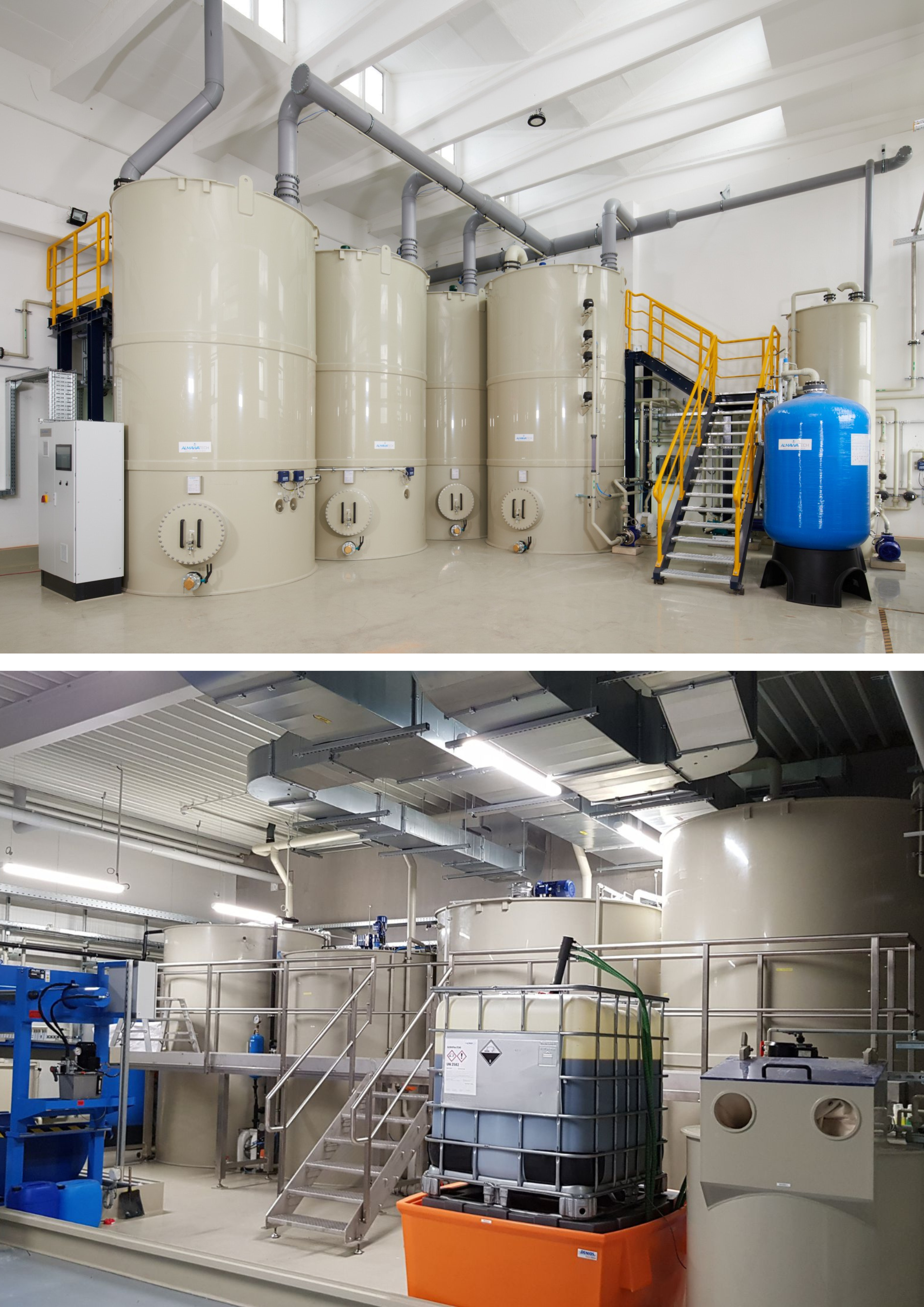Cyanide detoxification is an essential process in industrial wastewater treatment that aims to convert toxic cyanide compounds into less hazardous substances or eliminate them completely. Cyanides are used in many industries, including metal processing, electroplating, mining and the chemical industry, where they are often used in the surface treatment of metals or in gold and silver extraction. Due to their extreme toxicity to humans and the environment, cyanides must be carefully removed from wastewater or rendered harmless.
Table of contents
Toxicity and environmental relevance
Cyanides, especially the inorganic compounds such as sodium cyanide (NaCN) and potassium cyanide (KCN), are highly toxic and inhibit cellular respiration by blocking oxygen uptake in the cells. Even the smallest amounts can be fatal to living organisms, which makes strict regulations necessary for the handling and disposal of cyanide-containing wastewater.

Photo: CP system ALMA CHEM MCW for the removal of heavy metals, AOX, hydrocarbons, cyanide and chromium (using sodium bisulphite)
Cyanide detoxification process
There are several proven methods for cyanide detoxification that aim to convert cyanide into non-toxic or less toxic compounds. These methods can be divided into chemical and physical methods:
Alkaline chlorine oxidation (Cl₂/OH-):
Alkaline chlorine oxidation is one of the most common methods for cyanide treatment. In this process, cyanide (CN-) is oxidized with chlorine or sodium hypochlorite (NaOCl) in an alkaline environment to form harmless compounds such as cyanate (CNO-). The reaction takes place in two stages:- CN- + Cl₂ + 2OH- → CNO- + 2Cl- + H₂O
- Cyanate itself is less toxic and can be degraded to carbon dioxide and nitrogen in the further course of wastewater treatment.
Electrolytic oxidation:
In electrolytic oxidation, an electric current is passed through the cyanide-containing wastewater, which also oxidizes cyanide to cyanate. This process is particularly interesting for companies that already use electrochemical systems.UV oxidation:
Cyanides can also be broken down by UV irradiation and the addition of ozone (O₃) or hydrogen peroxide (H₂O₂). The process is suitable for low cyanide concentrations and can be used effectively in combination with other treatment processes.Precipitation and adsorption:
An alternative to oxidation is the precipitation of cyanide compounds. Here, iron(II) or copper salts are added to convert cyanide into insoluble metal cyanide complexes, which can then be filtered out. Adsorption on activated carbon can also be used to reduce the cyanide concentration.Precipitation and oxidation using hydrogen peroxide (H₂O₂):
Another effective method for cyanide removal is precipitation and oxidation with hydrogen peroxide. In this process, hydrogen peroxide is added to the wastewater to oxidize cyanide and convert it into cyanate. The reaction proceeds as follows:- CN- + H₂O₂ → CNO- + H₂O
Cyanate can then be further degraded to carbon dioxide and nitrogen. The addition of iron(II) ions as a catalyst(Fenton reaction) accelerates the oxidation. This process is particularly useful for the treatment of cyanide-containing wastewater in metal processing and electroplating.
- CN- + H₂O₂ → CNO- + H₂O

Photo: ALMA FIL AK activated carbon filter for removing residual cyanides after a CP system
ALMAWATECH solutions for cyanide detoxification
Our CP plants (chemical-physical plants) such as the ALMA CHEM MCW are specially designed to safely treat highly toxic wastewater, including cyanide-containing wastewater. These plants combine several processes for efficient cyanide removal. In addition to chlorine oxidation, precipitation, UV oxidation and adsorption, we offer customized solutions for precipitation and oxidation with hydrogen peroxide to reliably remove cyanide and other hazardous substances from wastewater.
Sustainability and safety
The treatment of wastewater containing cyanide is not only essential for environmental protection reasons, but is also required by law. Our systems make it possible to reliably comply with the legal limits for cyanide and to operate your wastewater treatment plants safely and efficiently.
Conclusion
The removal of cyanide from wastewater is a highly sensitive and important process in industrial water treatment. With a combination of chemical oxidation processes, precipitation techniques and adsorption, our systems offer a comprehensive solution for the safe and sustainable elimination of cyanides.







